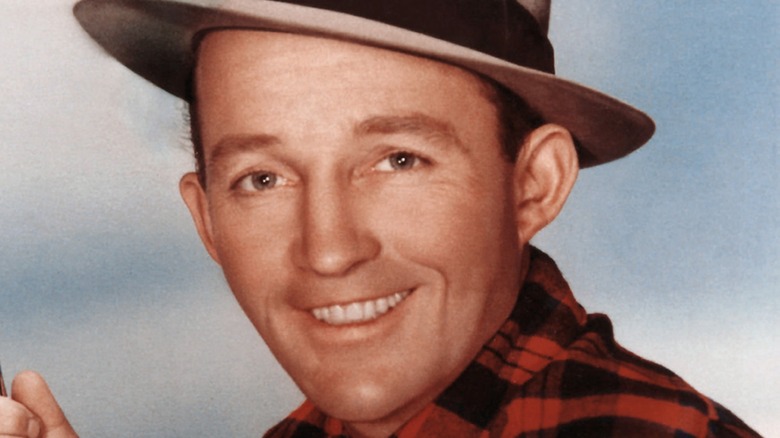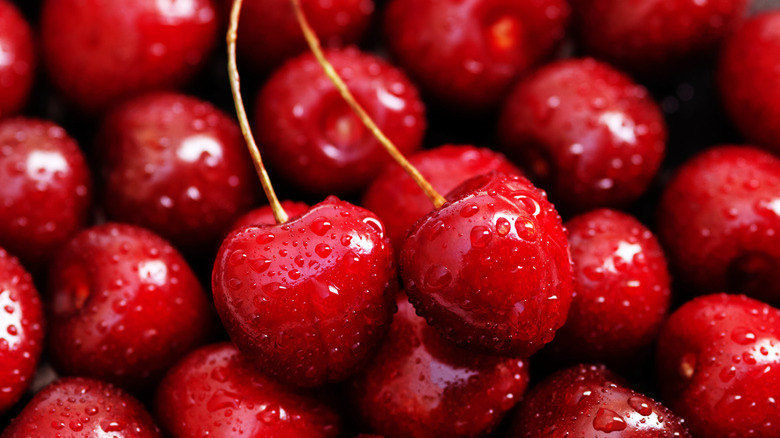Are Bing Cherries Actually Named After Bing Crosby?
According to Ask The Food Geek, cherry-picking season occurs annually, beginning in April and lasting through July or August. During this time, beautiful, ripe, red, Bing cherries are ready to be picked. This popular fruit is ingrained in American history. Folklore says it was a cherry tree that young George Washington cut down, and upon confessing the crime to his father, a lesson in telling the truth was born. History acknowledges the widespread telling of this tale, but they contend it's fictional in nature, invented by Washington's biographer.
Still, cherries were (and still are) an important food for those who settled in the U.S., making their way to America around the 1600s (via National Cherry Festival). The French eventually brought cherry pits to the U.S. and planted them, specifically in Michigan, making them a vital crop.
The National Cherry Festival reports that America produces 650 million pounds of cherries each year, including both the sweet and sour varieties. The most beloved, and perhaps the sweetest cherry you can hope to sink your teeth into, is the Bing cherry. This popular cherry's name has also been a topic of debate, with some claiming that it was named after the famous crooner, Bing Crosby, but the truth behind the fruit's name might surprise you.
The history behind the Bing cherry name
Bing Crosby wrote a cool song called "Life is Just a Bowl of Cherries" (as seen on YouTube), but that's about as far as his cherry naming goes. Per the National Cherry Festival, Oregon is home to many cherry orchards, and the Bing cherry was birthed in this region in 1847 by fruit farmers Henderson Lewelling and his brother Seth. Per Atlas Obscura, the Lewellings produced cherries of the sweet variety and Seth named the Bing cherry after Ah Bing, a Chinese immigrant who was an integral part of Seth Lewelling's team. Ah Bing was the foreman who helped cultivate and nurture the cherry trees.
In the journal of Florence Olson Ledding, step-daughter of Seth Lewelling, she recounts that the cherries were named after Ah Bing as a way of honoring him (via 1859 Oregon Magazine). Atlas Obscura reports that, according to Ledding, the farmer shunned the idea of naming the cherry for himself. Lewelling's rationale was partly due to Bing's size, as Ledding states he was a very tall man, recounting her step-father's words, "It's a big cherry and Bing's big, and anyway it's in his row, so that shall be its name."

